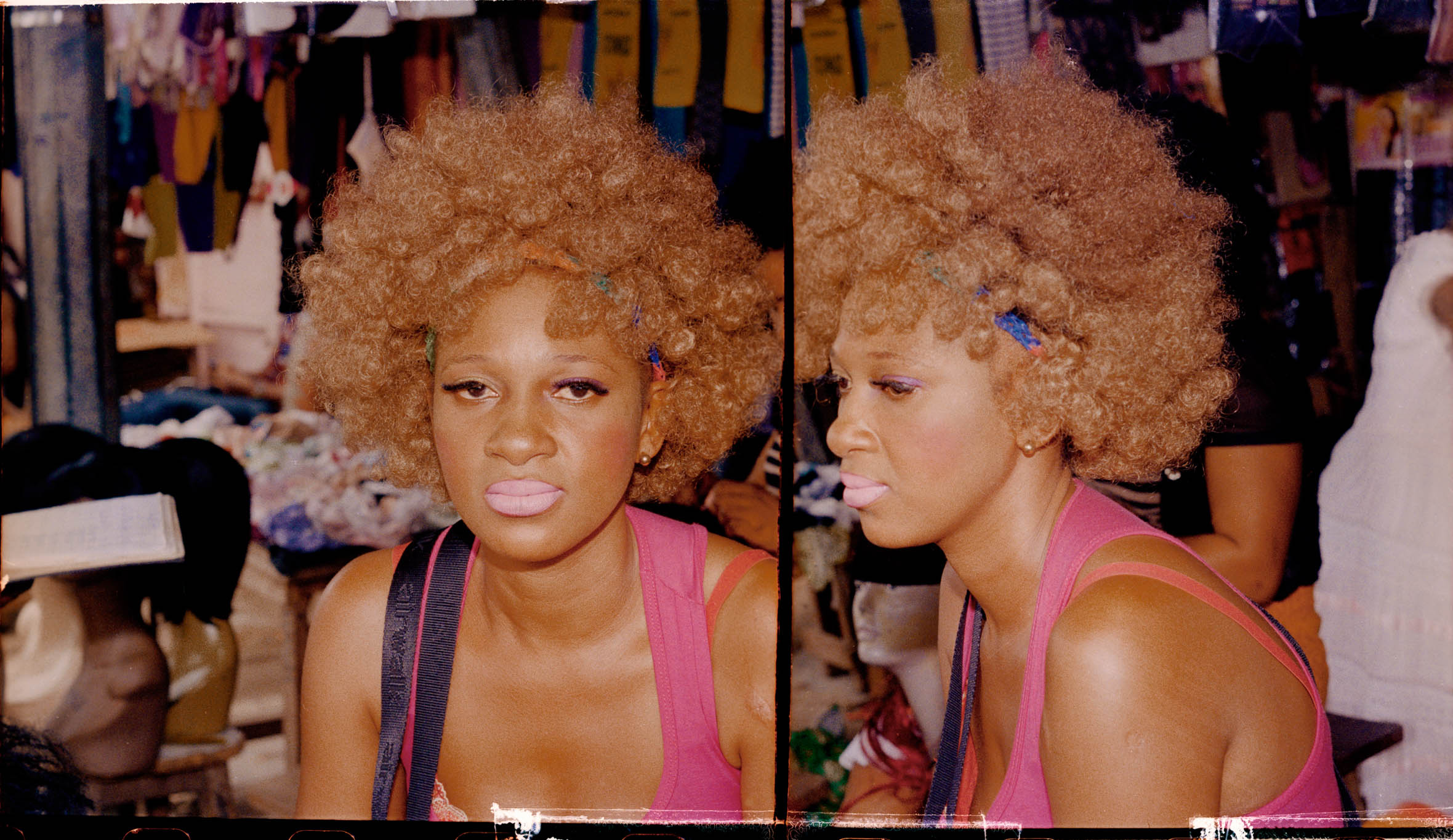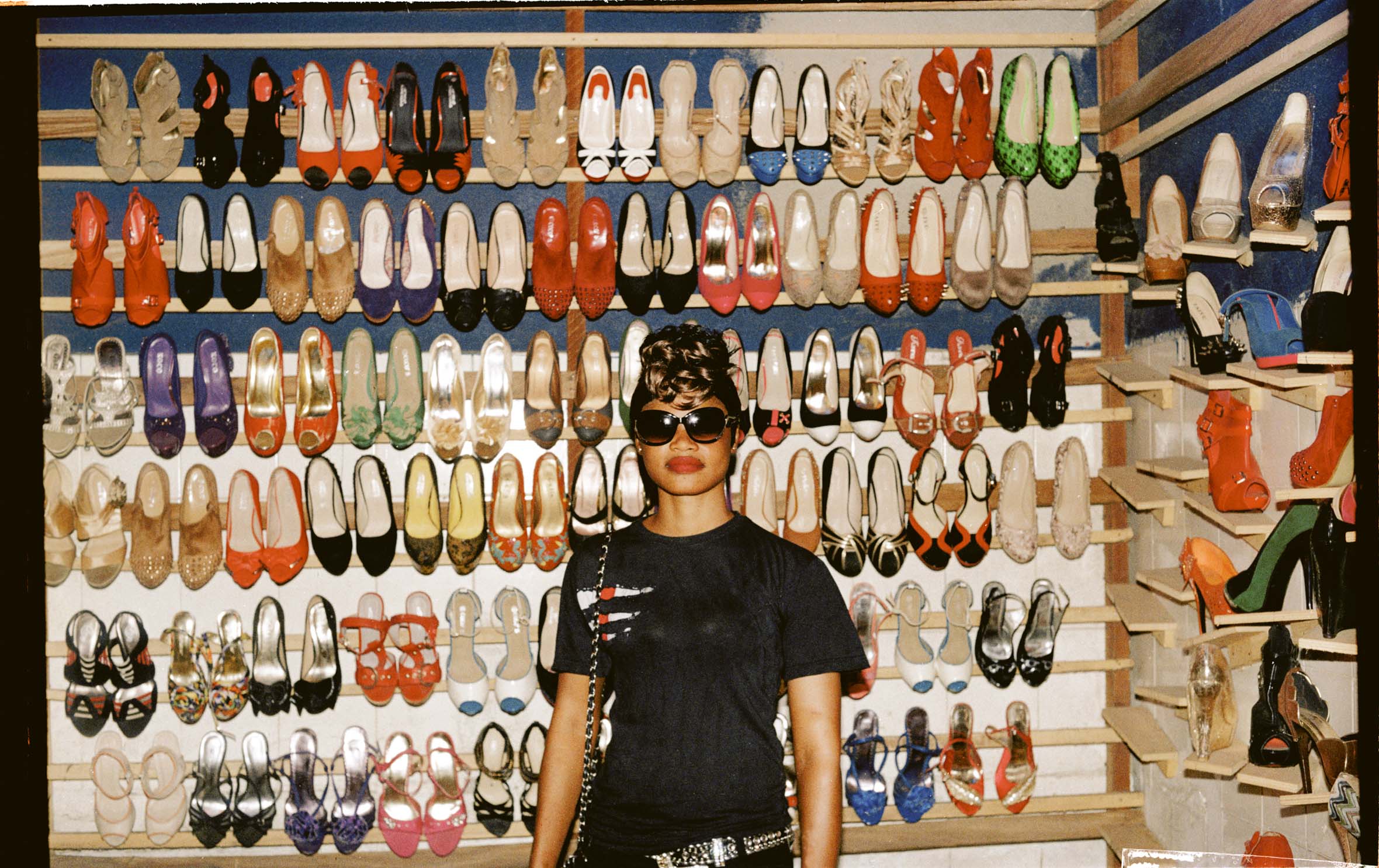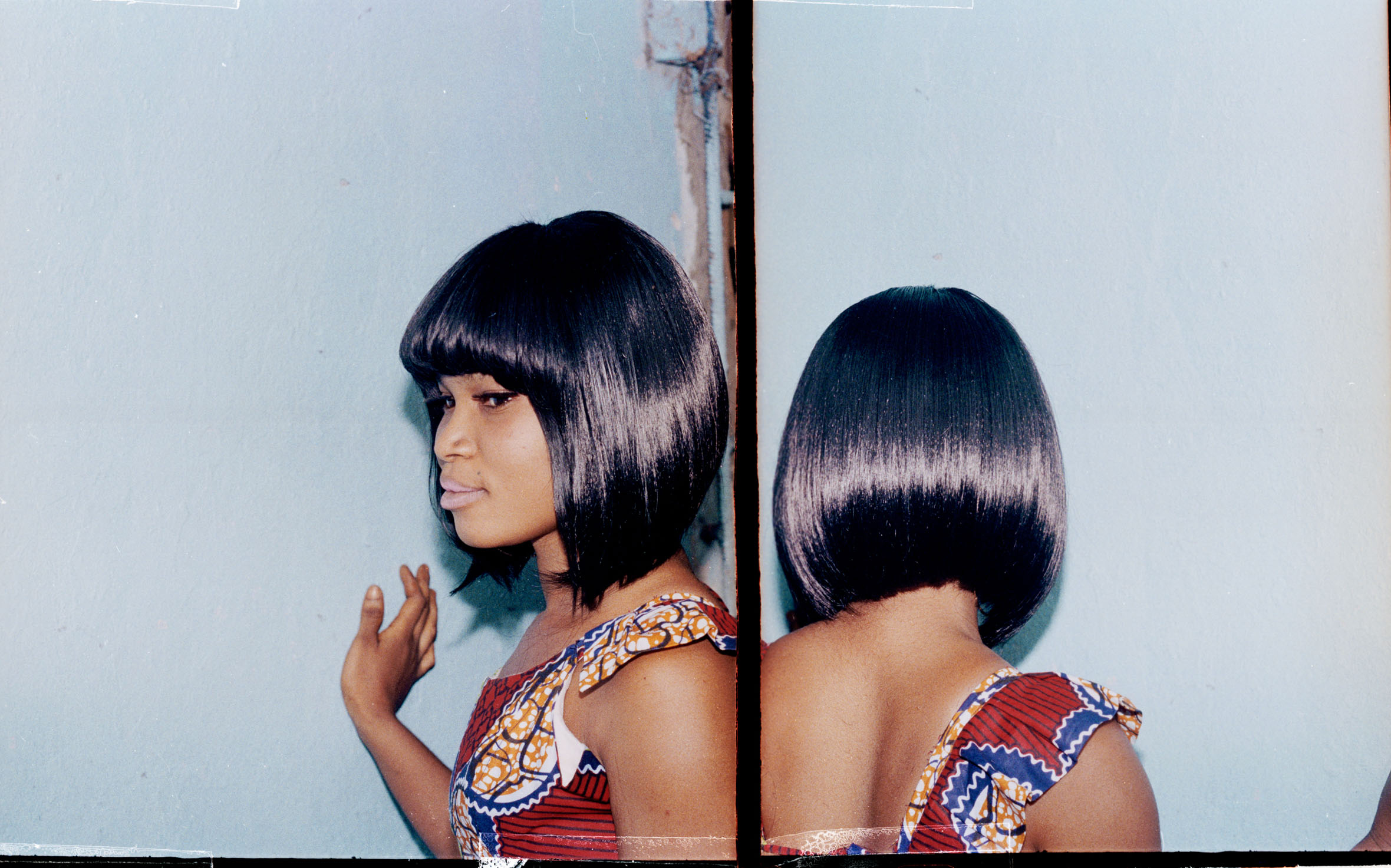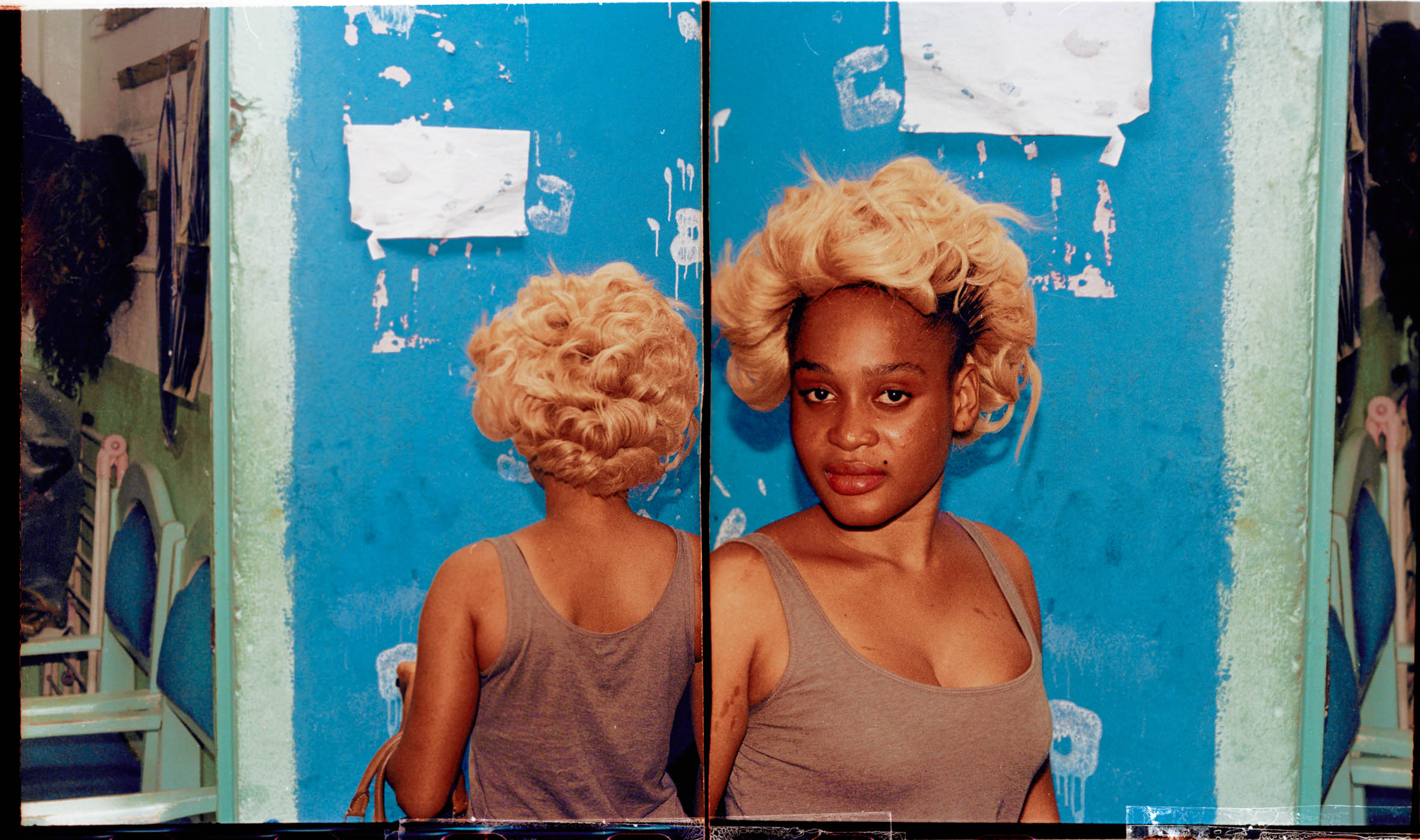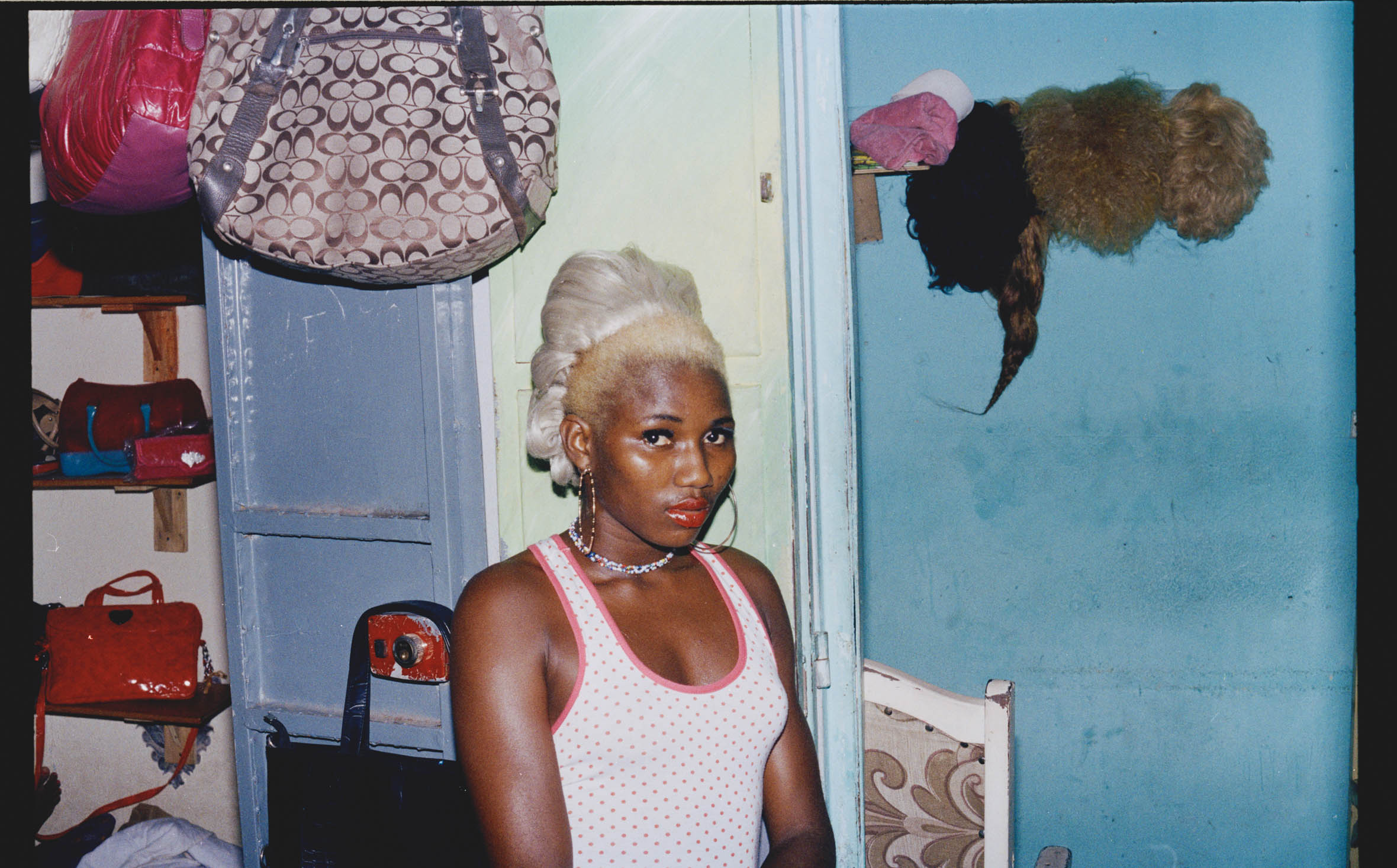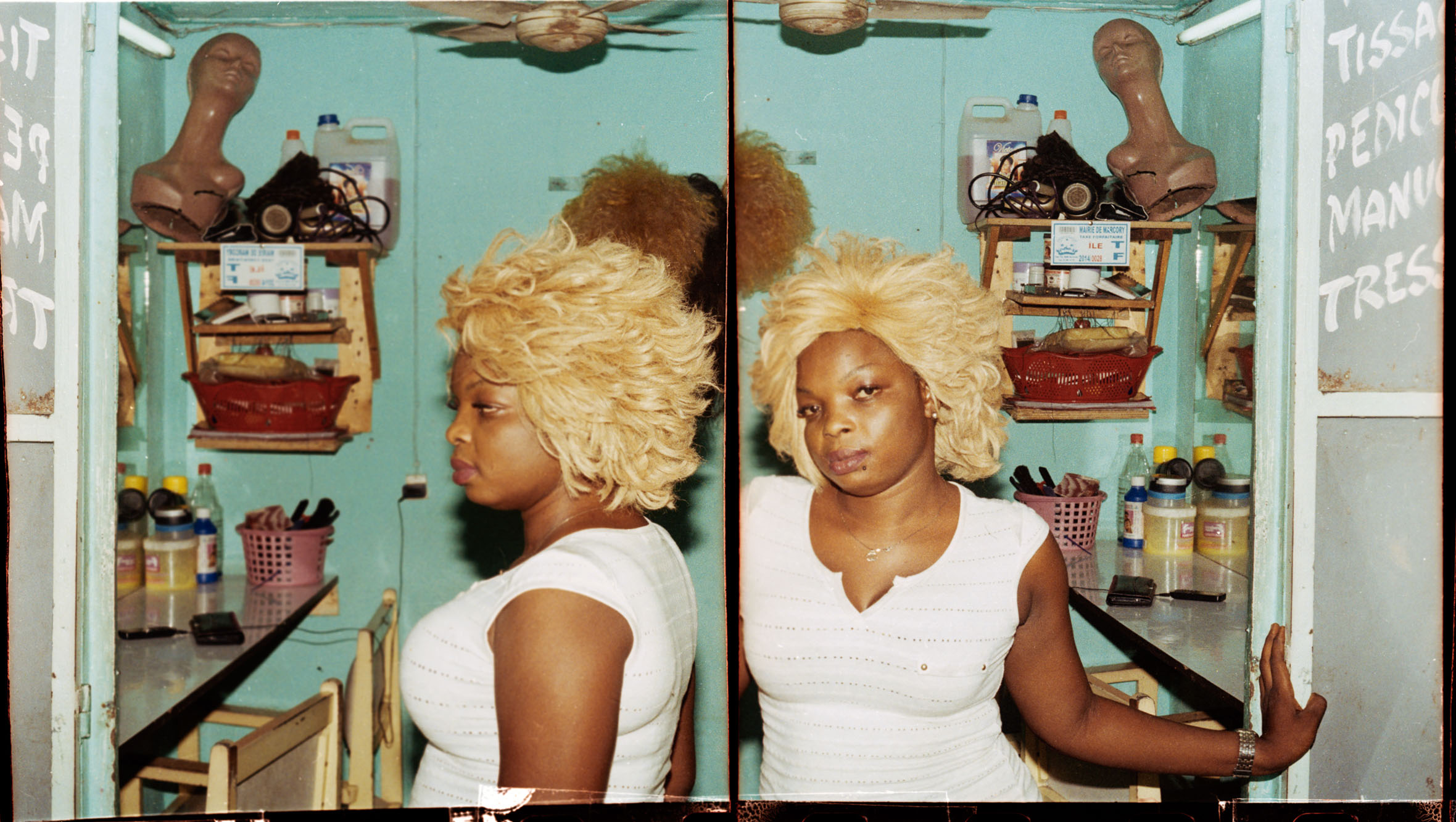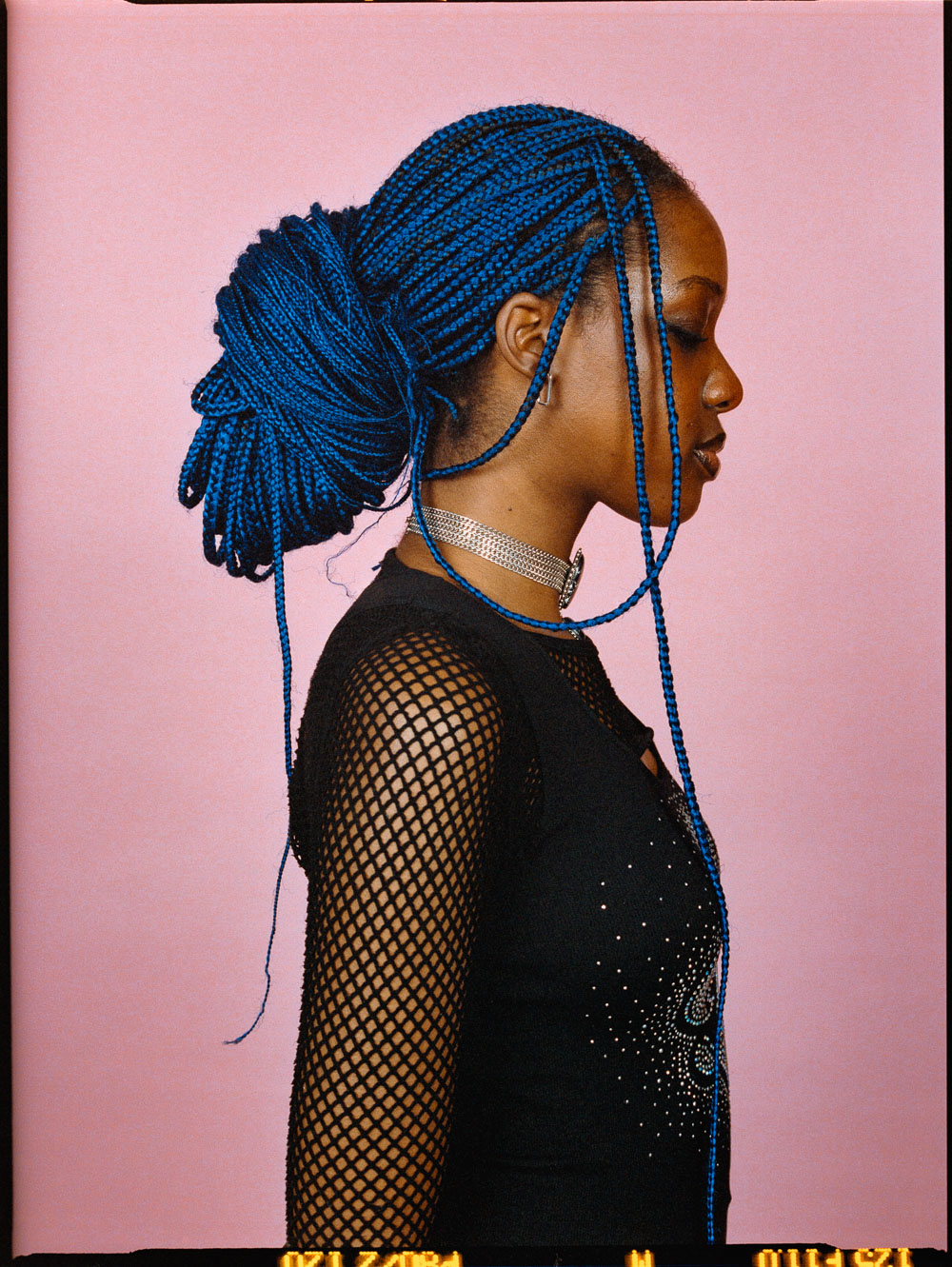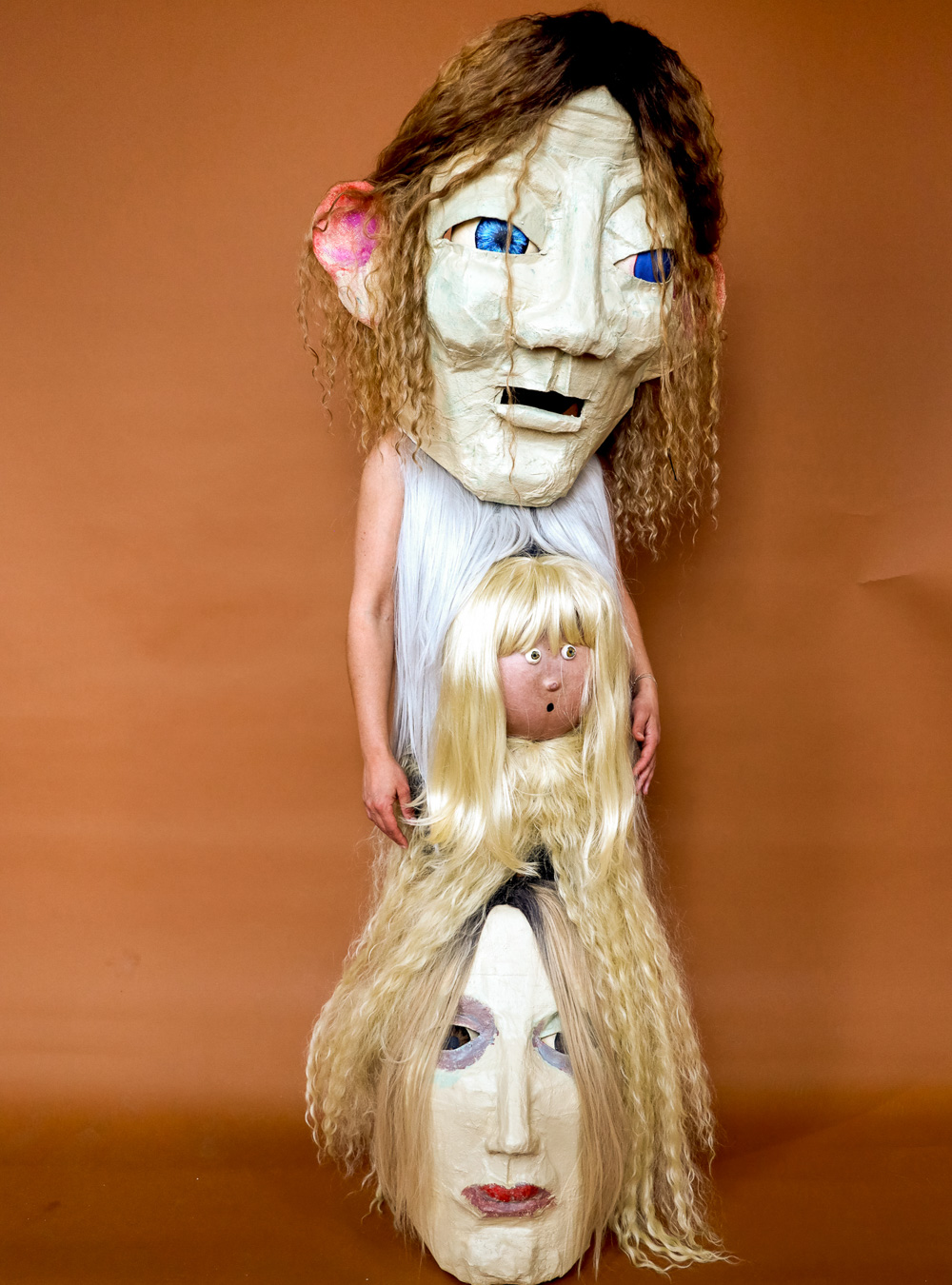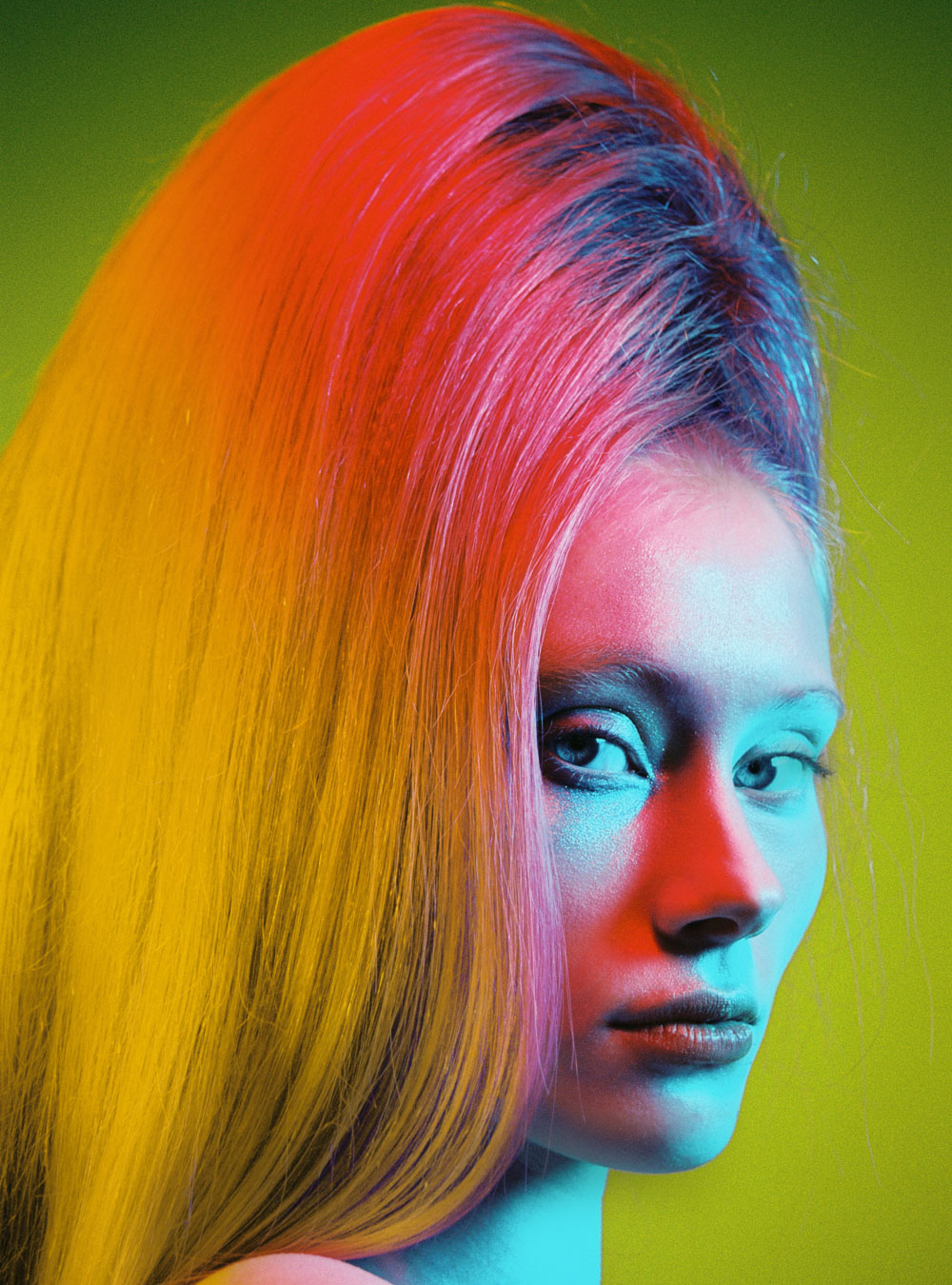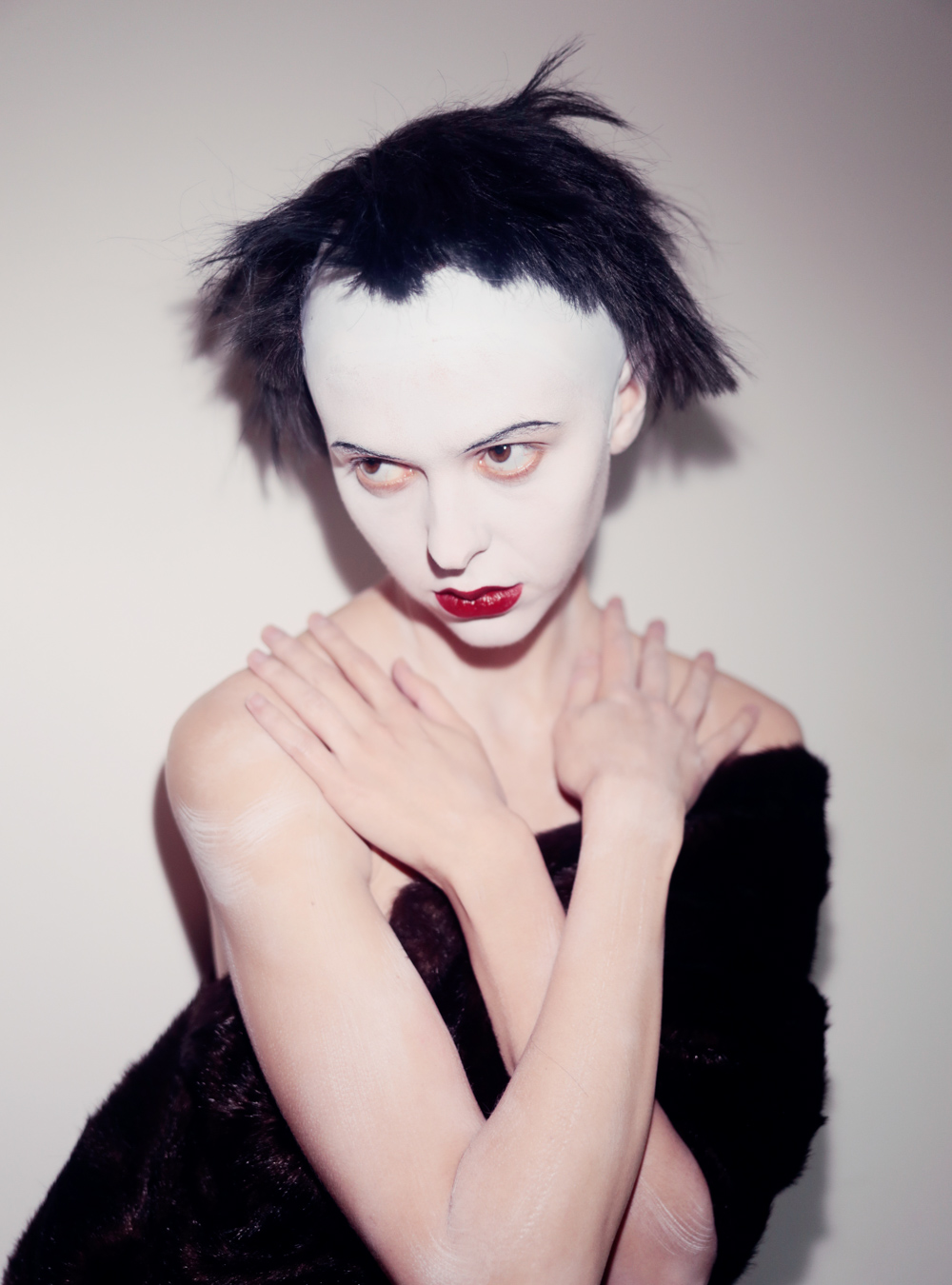- Emilie Regnier
- Emilie Regnier
- Emilie Regnier
ART+CULTURE: Emilie Regnier examines wig culture in Côte d’Ivoire and how for many Black women, hair and power go hand in hand
Photography + Words: Emilie Regnier
In Côte d’Ivoire, women go out of their way to be a “go” (a good-looking girl). A “go” is a woman who sways her shoulders! As she walks by, men turn their heads. At bars, she drinks champagne. Whether they come from Yopougon, Adjamé or Marcoury, they do not skimp on the means to make themselves beautiful. Pedicure, manicure, depigmentation products, and especially wigs. Hairstyles are the privilege of the “go-choc.” These women invest their savings in highlights, extensions, natural or synthetic hair. Several decades ago, Nigerian photographer J.D. ‘Okhai Ojeikere photographed traditional Nigerian hairstyles. I was partially inspired by his work to try to understand the complexities of the hair of black women. I tried to demystify the direct African-American influence, the part owed to globalization, and the part relating to the African decoding of information seen on television. Almost all the women I interviewed about their hair tastes told me that they wished to look like Beyonce, Rihanna, and sometimes both at once. The result is unique. To quote Dieudonné, a hairdresser in a Marcoury salon, “Tell me who you are and I will tell you what hairstyle to wear.”
All the hairstyles represent a fusion between African-American influence and African interpretations. To illustrate this, I used a technique of local photographs. Unable to afford a digital camera, many Ivorian photographers still work with film. Many of them are beauty photographers. Camera around the neck, they criss-cross the city with the goal of enriching the vast repertoire of the myriad hairstyles available on the market. Once their photos have been developed, they try to sell them for a price ranging between 75 cents and $1 to hairdressers to illustrate their book. To save a little, they print two perspectives of the same hairstyle on each print. I chose this topic because I somewhat understand what these women are seeking through hairstyle. Part of our identity is inherent to our image, and our image is defined by our attitude. In the Bible, Delilah cuts Samson’s hair and he instantly loses his legendary strength. The metaphor still applies today, at least to black women for whom the amalgam of hairstyle and power go hand-in-hand.
"Almost all the women I interviewed about their hair tastes told me that they wished to look like Beyonce, Rihanna, and sometimes both at once"
- ANTHROPOLOGY OF HAIR
- ANTHROPOLOGY OF HAIR
- ANTHROPOLOGY OF HAIR
- ANTHROPOLOGY OF HAIR
- ANTHROPOLOGY OF HAIR
